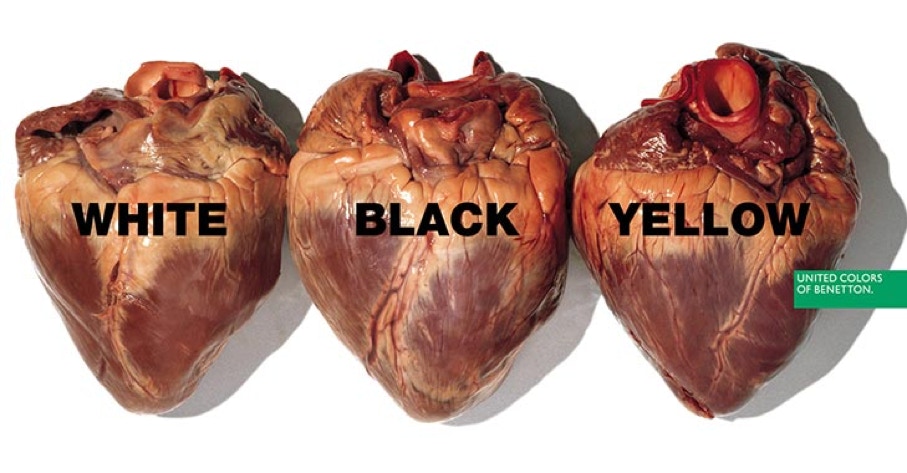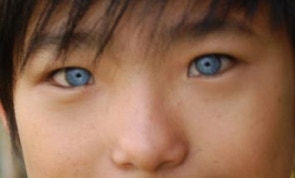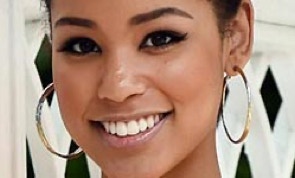The creativity of author, designer, broadcaster Ben Arogundade
Genetic Testing: I Thought I Was Black - Until I Had An Ancestry DNA Test - Now The Truth Is More Complex
I WAS BORN A BLACK AFRICAN - at least that is what I thought - until I underwent ancestry DNA testing. Now the result has put my perceived ancestry in doubt. By Ben Arogundade. April. 12, 2020.

WHEN IS A BLACK MAN NOT A BLACK MAN? When author Ben Arogundade submitted to ancestry DNA testing, he got more than he bargained for, and the search results caused him to question the very ethnicity he had lived with all his life.
I COME FROM A FAMILY of black Africans. Nigerians to be precise. I was born in London in 1965 to immigrant parents who came from that country to the UK, like many other families from the African and West Indian Commonwealth. For my entire life I have thought of myself as a black man — I even wrote a best-selling book, Black Beauty — and I have also been viewed as a black person by wider society. I have dark brown skin, Afro hair and a West African-style nose and lips.
But now these assumptions about my ethnicity and background have been challenged by the shocking results of ancestry DNA testing.
THE SEARCH FOR ETHNICITY
My initial curiosity about ancestry DNA testing came from my niece, Gigi. She is a beautiful woman with amazing, naturally green eyes. I was aware that people of African ethnicity could only possess this eye color either as the result of a rare genetic defect, or more usually by having European ancestry somewhere on both sides of our family, who were carriers of the gene for green eyes. As far as I knew, there were no Europeans anywhere within our extensive family tree — but, according to science, there had to be.
I was excited by the fact that there could be a hidden ancestry, some unknown ethnicity, which my family were unaware of, and that could go back thousands of years on Earth. In my search for the truth, I decided that ancestry DNA testing was something I had to do.
ANCESTRY DNA TESTING
I did some online research and located an ancestry DNA testing company close to where I live in London, and gave them a ring. They sent me a DNA testing kit through the post. I followed the instructions — which involved taking a swab of the inside of my cheek with a special sampling stick — then posted it back to them.
I explained what I had done to my girlfriend, who was instantly interested in getting her own DNA ancestry test, and so she did it too. She is white, and Mediterranean-looking, and she wondered if she might possess a chunk of African ancestry, considering the well-worn story of how the Africans went north into Southern Europe back in the eighth century.
THE DNA TESTING RESULT
Eight weeks later the company emailed me my results. They were shocking, to say the least. This is how they unfolded;
Sub-Saharan African — 65 per cent
East Asian — 28 per cent
European — 7 per cent
And from that moment on, my perception of myself was changed forever. Suddenly, after being a black man for 48 years of my life, I realised that the truth of my ethnicity was far more complex than that. I was actually black, white and Asian combined.
STORIES OF GENETIC TESTING
Within human evolution there are only four population groups from which we have all evolved — the three mentioned above, plus Indigenous (or Native) American. Most people who undergo ancestry DNA testing are likely to be a combination of two or more of these population groups. I was delighted that I was a hybrid of three out of the four, but a part of me was also disappointed that I didn’t have Native American ancestry too, which would have completed the whole set — the slam dunk. Far from wanting to be racially pure — all African — I wanted to be, “of the world” — a more modern concept for today’s mixed generation. Less than 100 years ago, being of part-Native American ancestry was a mark of shame for many — whereas today everyone wants some Blackfoot or Cherokee in them.
ENTER EAST ASIA
Still, my ancestry DNA testing results were a big shock. From my niece’s green eyes, I had expected the search to reveal a percentage of European ancestry, but I did not factor in also having East Asian DNA, and certainly not a sample as large as 28 per cent. I looked back at old family photos, suddenly noticing my grandfather's “Asian eyes”.
My girlfriend’s DNA search results came in on the same day as mine. She was 98 per cent European and two per cent African. She was disappointed with her test results — she wanted to be ethnically “spicier” — a spice girl — and she lamented the fact that she was basically a white woman. I pointed out to her that in America, where anyone with any degree of African ancestry is traditionally classified as black — according to an old law called “the one-drop rule” — she might be welcomed as a woman of colour, regardless of the fact that she looks white. This is what has happened to African American celebrities such as Mariah Carey and Vanessa Williams.
MY NEW ETHNICITY
I began calling family and friends with the news of my newfound multi-ethnicity. All were fascinated, and many ended up opting to have their own ancestry DNA tests done too. I was teased by some of my friends, who jokingly called me Bruce Lee and Ho Chi Minh, on account of my almost one-third East Asian ancestry.
I was saddened that I could not tell my parents about our DNA test results, as they are now both dead. My mother especially would have got a kick out of it, as a few years ago she compiled a family tree, which only documented a few centuries of Nigerians, with no East Asians or Europeans anywhere in sight.
ANCESTRAL MIGRATION
I wondered about the stories of my ancient ancestors and their migration around the globe all those years ago. According to research, we each have approximately 1,024 ancestors who share our DNA. Genetic ancestry testing reminds us of how little family trees like mine really tell us about the whole story of our ethnicity and heritage — all 100,000 years of it.
I pondered the East Asian side of my genetic ancestry. When exactly did my African ancestors first come into contact with East Asia? And what, in modern geographical terms, does East Asia mean? Actually, one of my sisters has a special form of glaucoma, an eye condition which doctors say mostly occurs in Japanese people, so perhaps modern-day Japan is where this segment of my DNA originates. And what about my seven per cent European ancestry? In my mind I wanted it to be Irish, as they have a brotherhood with us Africans that goes back many centuries, and today one or two of my mates are Irishmen.
I also began to think of the concept of ancestral memory proposed by some experimental psychologists and geneticists — the idea that locked deep within our DNA are the memories of our ancient experiences. On a crude level, it may explain why, for example, we may feel a certain affinity or connection with strangers we meet on holiday, or with certain places or cities we have never visited before. Does ancestral memory explain why, during a recent trip to Vietnam, I encountered a local Vietnamese tour guide that I strongly felt I had met somewhere before?
OPRAH WINFREY ANCESTRY DNA SEARCH
Today, ancestry and DNA testing are growing in popularity, and commercial labs are springing up all over the world, offering basic swab-and-send ancestry tests for between £100 and £200 ($160 and $320). The culture is quickly evolving into a lucrative industry for the DNA testing labs. The genealogy website ancestry.com was recently valued at $1.6 billion. Many celebrities have had their true ethnicities revealed on documentary television shows — such as Finding Your Roots and talk show Lopez Tonight — including Oprah Winfrey (89% African, 8% Native American, 3% East Asian) and Jessica Alba (72.7% European, 22.5% Native, 2% Sub-Saharan African).
Ancestry DNA testing has touched a particular chord with African Americans, many of whom had thought they would never find out about their distant ancestors, as a result of the displacements of slavery. But at the same time, many have also been hurt by news that sections of their ancestral DNA reveal maternal European ancestry, which in many cases belonged to white slave master relatives. According to ancestry.com, the average African American is 65 per cent sub-Saharan African, 29 per cent European and two per cent Native American. Many are not ready to hear about their white ancestry, and some DNA testing labs now offer counselling to customers in lieu of their test results being revealed.
Simultaneously, there is some dispute amongst geneticists about exactly what ethnicity information genetic DNA testing can reveal. At a basic level it can show which of the four population groups a person derives from, and their respective percentages, but not too much more in terms of accuracy. Migrational data or links to specific tribes are less certain. Recent reports of people allegedly being traced to famous historical figures such as Shakespeare or Napoleon, or tribes such as the Vikings or the Zulu's, have been frowned upon by researchers. Professor Mark Thomas of Human Genetics Department at UCL London, likens such claims to “genetic astrology”.
DNA & THE REAL TEST OF IDENTITY
Low cost ancestry DNA testing has arrived at a time in history when people around the world are questioning traditional notions about race and ethnicity, with many rebelling against past pressures to conform to society's definitions. In 1999 Tiger Woods caused controversy when he refused to classify himself as an African American, instead inventing his own word, Cablinasian, to describe his multi-ethnicity — which combines African, European and East Asian heritage. This trend for racial self determination is on the up. Ten million Americans changed how they identify their race or ethnicity when asked by the Census Bureau over the last decade.
Ancestry DNA testing challenges the long-held notion of race as a person’s birthright. When, as a result of the test, a white person for example, discovers that they have a large proportion of African ethnicity, or vice versa, this does not in real terms, suddenly make them “black”. What’s missing is the experience of being black. Identity cannot be subsumed into a simple set of numbers that tell you what you are. Blackness, whiteness, Asian-ness, Latino-ness, Native American-ness and all the others “nesses” are the sum total of that person’s lived experience. In other words, it is living black (as opposed to being born black) that is the qualifier. This has fascinating consequences in this new century, as it implies that a person can be “black” without physically or aesthetically being so. The author Toni Morrison alluded to this in a 1998 article in The New Yorker, when she stated, in reference to President Bill Clinton, that “white skin notwithstanding, this is our first black president.” She argued that what made him “black” was the fact that he had lived a life similar to that of many African American men.
ANCESTRY DNA FUTURES
These days, the DNA testing revolution is stretching far beyond questions of ancestry, and is also increasingly being used in medicine as a diagnostic tool to predict possible future illnesses. Actress Angelina Jolie famously based her recent decision to have a double mastectomy on a lethal gene mutation — BRCA1 — which was detected via DNA testing. The technology is also being utilised in the world of professional sports. Star players from the Barcelona football (soccer) team, including Lionel Messi and Neymar, have had 45 different genes analysed from their DNA test swab samples, as a means of predicting potential injury problems and muscular weaknesses. The results are then used to optimise a player's individual training programs.
Overall, DNA testing is a force for good. Imagine a future in which genetic ancestry testing was compulsory for all newborns throughout the world? Think what it could do to challenge if not eradicate the planet's ethnically and racially motivated intolerance and violence, if every single child had a certificate revealing their true multi-ethnicity? Where would hate groups turn for sustenance if it were revealed that their members were in fact hating themselves, and their own ancestry.
In this regard ancestry DNA testing holds a powerful and redemptive message for all humanity: that race is a cultural construct, that no one is pure, that racial supremacy of any kind holds no quarter in truth — and that everybody, to use a phrase, is “mixed race”.
As for myself, do I still consider myself a black man in the light of my DNA search results? The answer is — I am a “world man”, joined to every human on Earth.
Discover more about Ben Arogundade's books at whitelabelsbooks.com.


